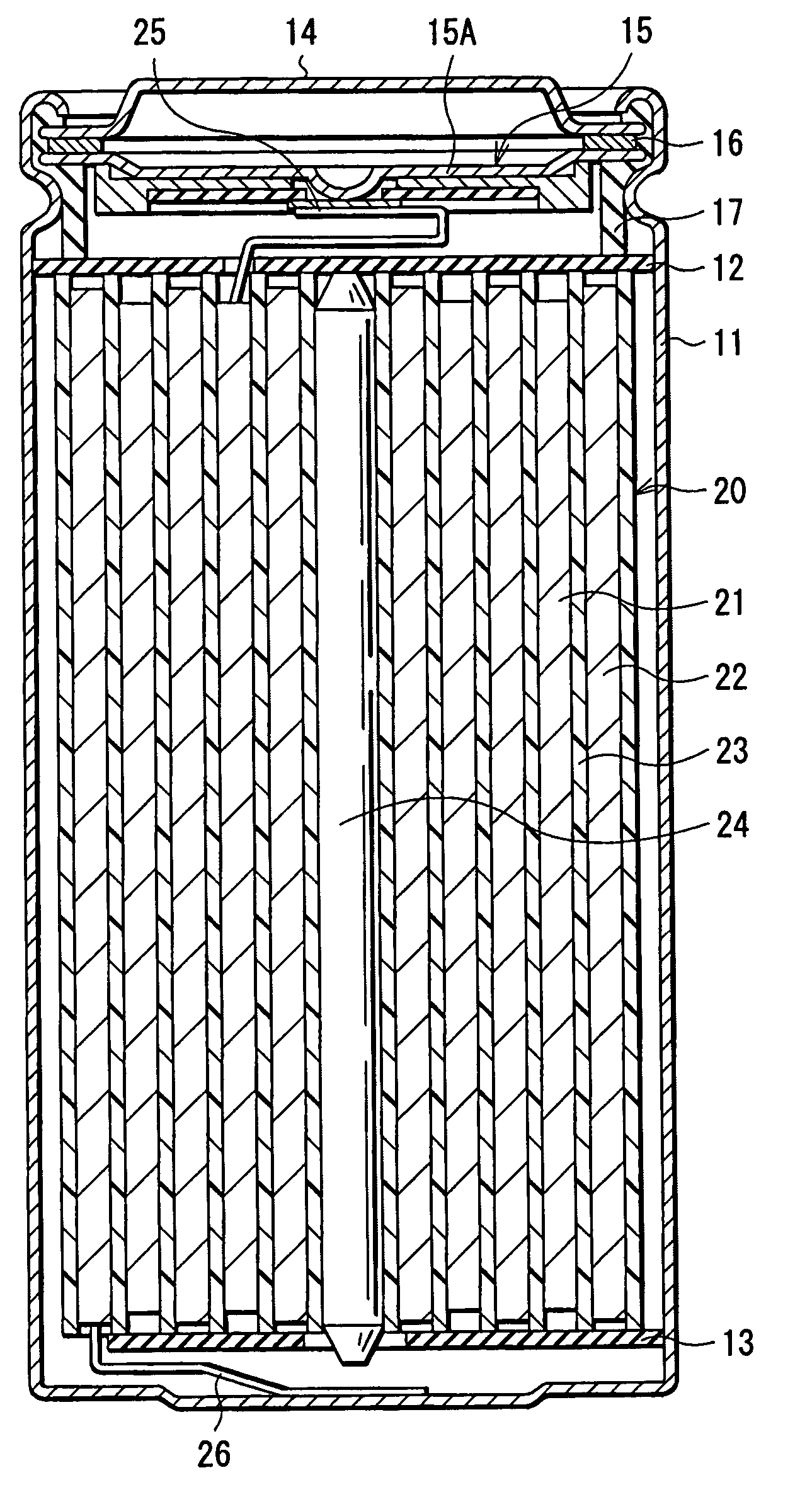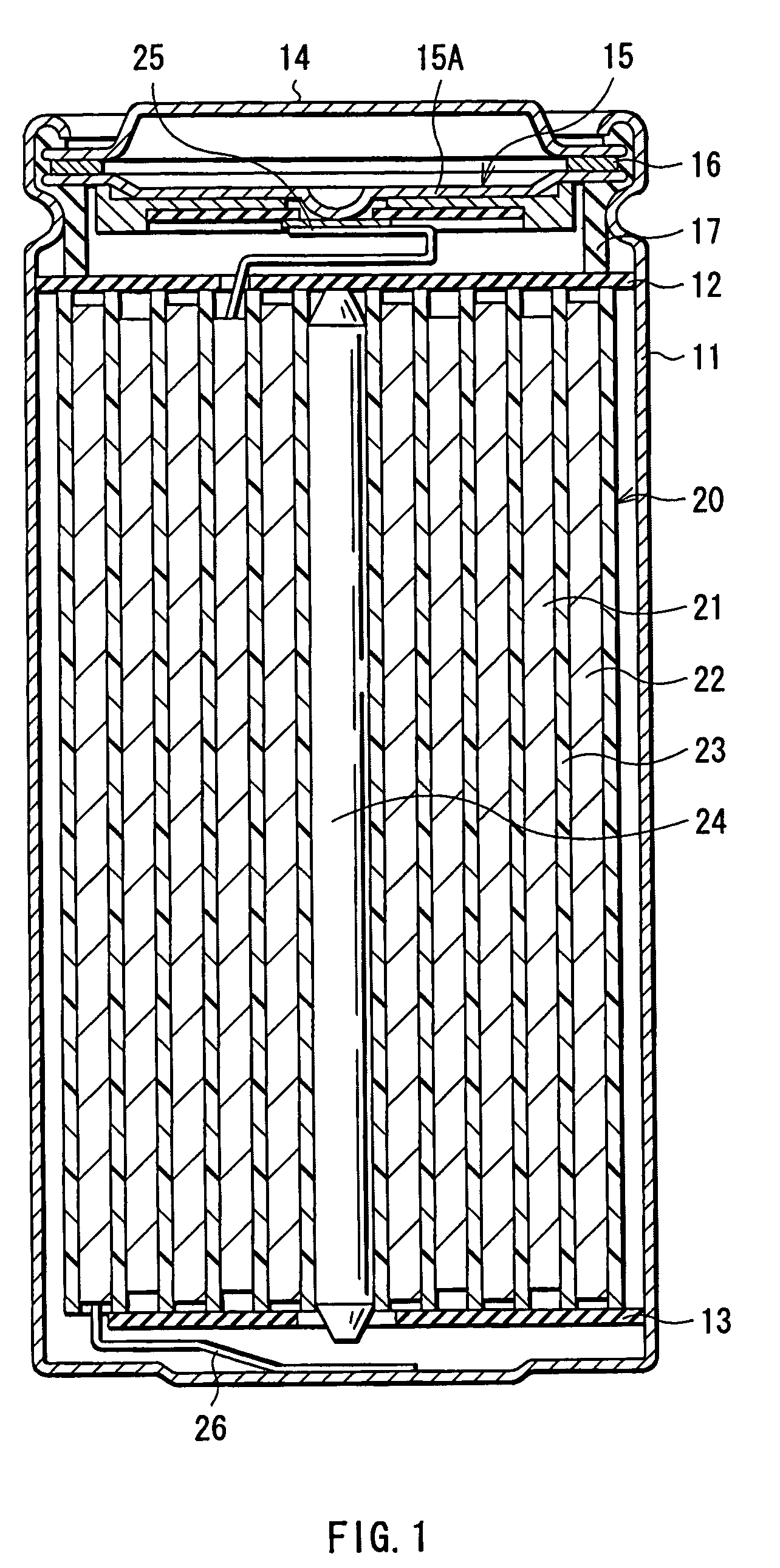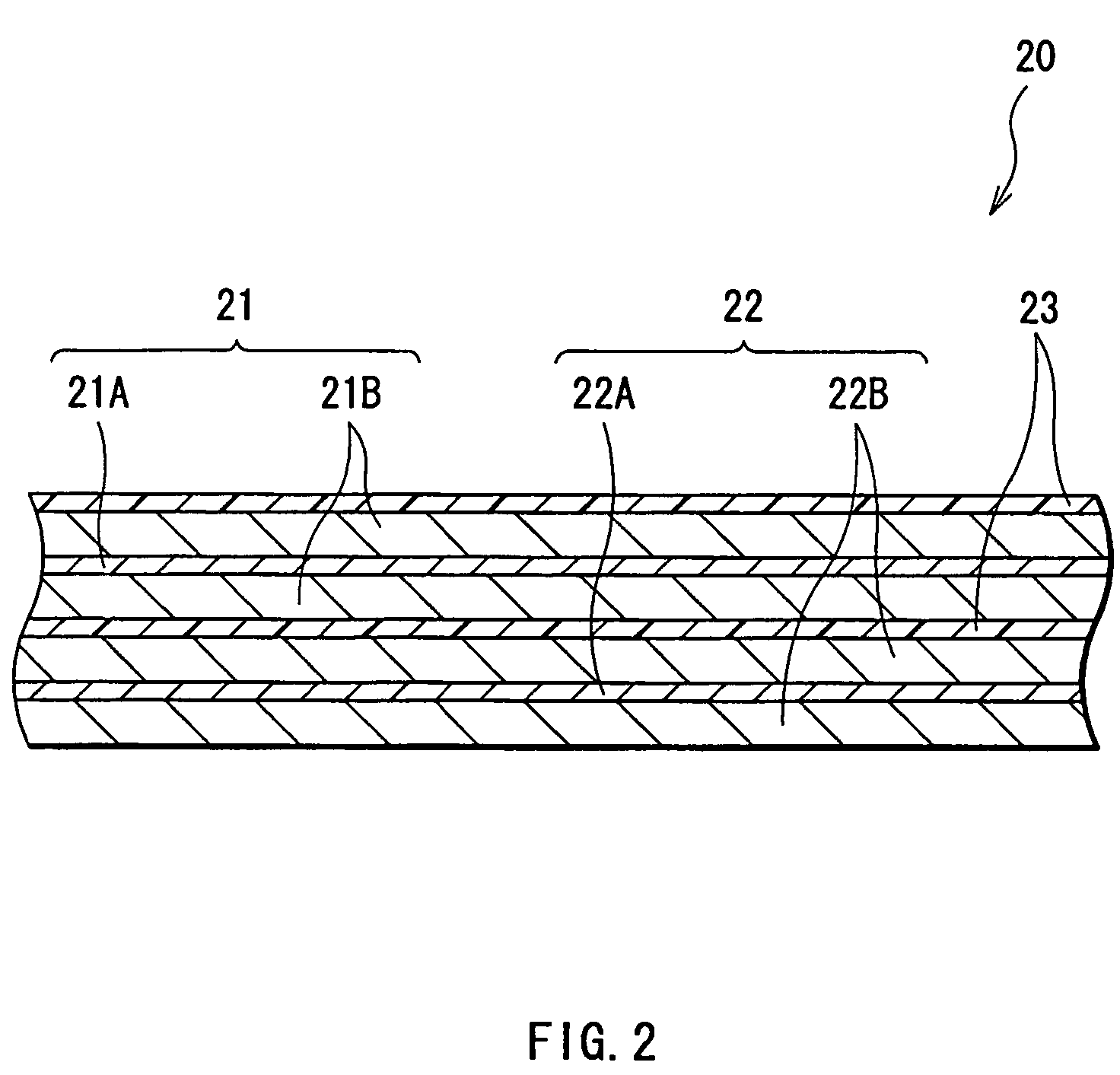Battery including an electrolyte solution comprising a halogenated carbonate derivative
a technology of electrolyte solution and battery, which is applied in the direction of non-aqueous electrolyte cells, cell components, couplings, etc., can solve the problems of short cycle life of lithium secondary batteries, control a minute pore structure, and anode capacity by intercalation has an upper limit, etc., to achieve high ionic conductivity, improve battery characteristics such as cycle characteristics and low temperature characteristics, and the effect of high ionic conductivity
- Summary
- Abstract
- Description
- Claims
- Application Information
AI Technical Summary
Benefits of technology
Problems solved by technology
Method used
Image
Examples
examples
[0062]Next, examples illustrative of the present invention without limitation will be described below.
examples 1-1 through 1-10
[0063]Coin-type secondary batteries shown in FIG. 4 were formed.
[0064]At first, after 91 parts by weight of lithium cobalt complex oxide (LiCoO2) as a cathode active material, 6 parts by weight of graphite (KS-6 of Lonza) as an electrical conductor and 3 parts by weight of polyvinylidene fluoride as a binder were mixed to prepare a cathode mixture, the cathode mixture was dispersed in N-methyl-2-pyrrolidone as a solvent to form cathode mixture slurry. Next, after the cathode mixture slurry was applied to a cathode current collector 31A made of aluminum foil with a thickness of 20 μm, and was dried, the cathode mixture slurry was compression molded to form a cathode active material layer 31B. After that, the cathode current collector 31A and the cathode active material layer 31B were stamped into a pellet of 15.2 mm in diameter to form a cathode 31.
[0065]Next, 10 g of copper powder and 90 g of tin powder were mixed, and the mixture was put into a quartz boat to be heated to 1000° C. ...
example 2-1
[0075]A secondary battery was formed as in the case of Example 1-5, except that as the first electrolyte salt, LiB(C2O4)(C4H4O4) was used instead of LiB(C2O4)2. The cycle characteristics and the low temperature characteristics of the secondary battery of Example 2-1 were evaluated as in the case of Example 1-5. The results are shown below in Table 2 together with the results of Example 1-5 and Comparative Examples 1-1, 1-5 and 1-6.
[0076]
TABLE 2LOWTEMPERA-CYCLETURECHARACTER-CHARACTER-ISTICSISTICS(CAPACITY(CAPACITYANODEFIRST ELECTROLYTE SALTSOLVENTRETENTIONRETENTIONACTIVECONTENTLiPF6(vol %)RATIO)RATIO)MATERIALKIND(mol / l)(mol / l)FECECDMC(%)(%)EXAMPLE 2-110Cu-90SnLiB(C2O4)(C4H4O4)0.211040503818EXAMPLE 1-510Cu-90SnLiB(C2O4)20.211040504020COMPARATIVE10Cu-90Sn——1—5050115EXAMPLE 1-1COMPARATIVE10Cu-90Sn——11040501024EXAMPLE 1-5COMPARATIVE10Cu-90Sn——12030501329EXAMPLE 1-6
[0077]It is evident from Table 2 that in Example 2-1, as in the case of Example 1-5, the cycle characteristics could be impro...
PUM
| Property | Measurement | Unit |
|---|---|---|
| thickness | aaaaa | aaaaa |
| diameter | aaaaa | aaaaa |
| temperature | aaaaa | aaaaa |
Abstract
Description
Claims
Application Information
 Login to View More
Login to View More - R&D
- Intellectual Property
- Life Sciences
- Materials
- Tech Scout
- Unparalleled Data Quality
- Higher Quality Content
- 60% Fewer Hallucinations
Browse by: Latest US Patents, China's latest patents, Technical Efficacy Thesaurus, Application Domain, Technology Topic, Popular Technical Reports.
© 2025 PatSnap. All rights reserved.Legal|Privacy policy|Modern Slavery Act Transparency Statement|Sitemap|About US| Contact US: help@patsnap.com



